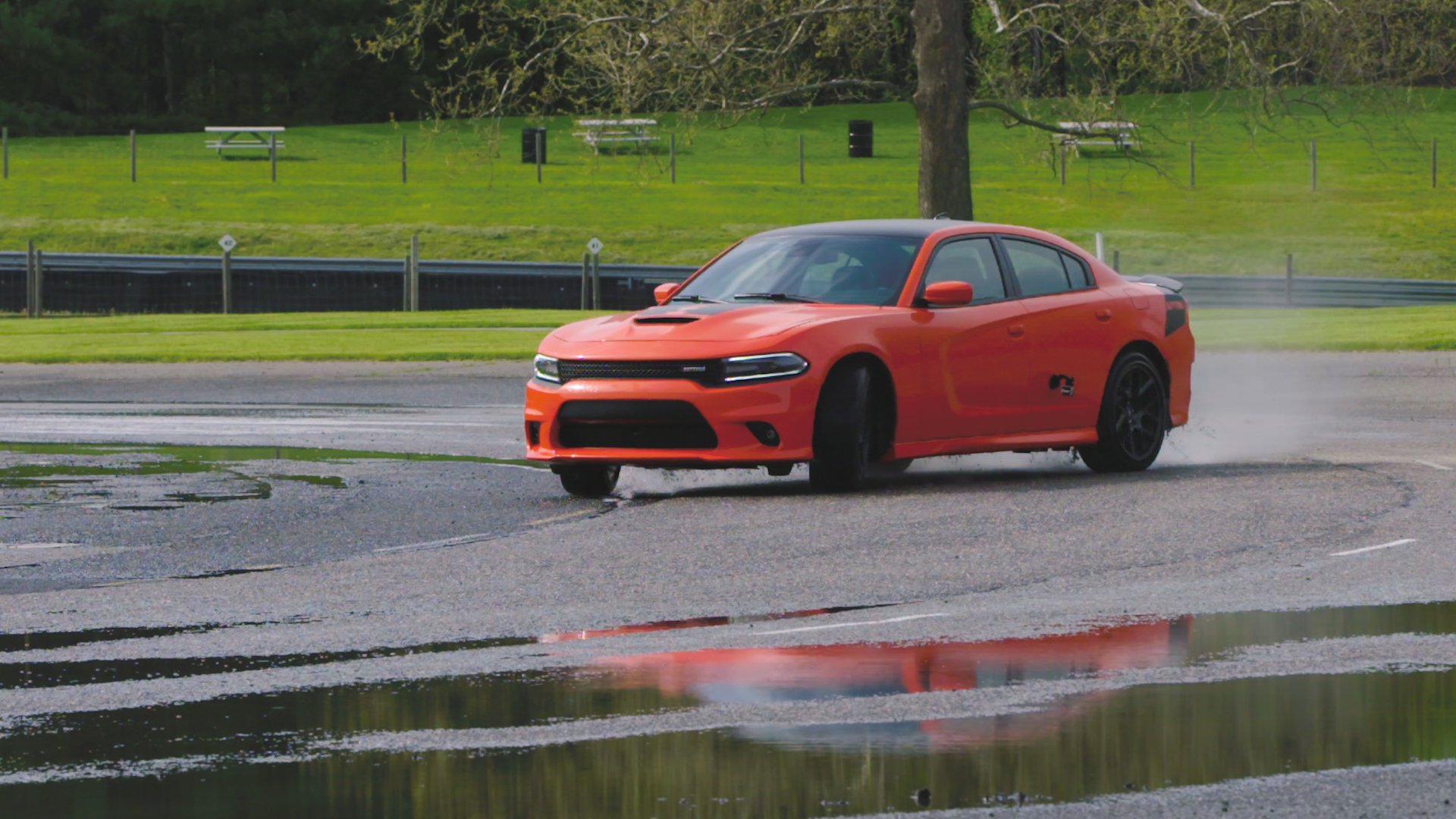Mastering car control and having the ability to prevent your car from violently sliding off the road in inclement weather is an underappreciated skill. Doing it right requires practice and patience—and the right tools. In this case, we had the 2017 Dodge Charger Daytona and the Lime Rock Park skid pad at our disposal. And as a test subject, we had me—a young, overconfident driver who too often relies on all-wheel-drive as a crutch. Here’s how it went.
The Dodge Charger Daytona has a 5.7-liter V8 HEMI
The Dodge Charger Daytona is an inspired choice for the skidpad. That day at Lime Rock, we also brought a Lexus RCF and a BMW M2, but chose the Daytona for the skid pad because of its cheap tires, undeniable ability to put power directly to its rear wheels, and the uncontrollable urge to put a muscle car sideways. As a semi-novice car slider, the RCF’s throttle response was a bit too violent for mastering drifts and as for the M2, we wanted to save as much tire as possible for the autocross and big track.

The specific Daytona that Dodge loaned us was equipped with the lesser-powered 370-horsepower, 5.7-liter V8 HEMI instead of the 6.4-liter 392 motor. If you’re not familiar with the Charger lineup, understand that it is a model of many variations. To name just a few, there’s the Hellcat, Scat Pack, R/T, and now for 2017, the big-winged Daytona model has been revived once again. Only this time, there’s no big wing.
Though there’s nothing like being shouted at by a 707-horsepower Hellcat motor, the 5.7 V8 that our Daytona loaner had was prime for what we needed to do. Basically, this motor allowed us to drive without the car’s rear wheels constantly spinning without traction, but still with as much hustle as we could possibly need on a backroad—or in this case, a skid pad.
Speaking of backroads, we hustled up to Lime Rock on some of best backroads Northwest Connecticut has to offer. Surprisingly, the Charger’s “performance suspension” setup from the Daytona package managed to keep the car together and let us hustle into corners with confidence. In fact, if our Daytona had rubber that had less roll-friendly sidewall than the 20-inch all-seasons tires that were mounted, then we would’ve been set.

Either way, even with the spongey all seasons, the car handled itself surprisingly well. And unlike with the M2, we didn’t feel bad about burning the Daytona’s squishy rubber.
It can slide for days.
So it turned out, there wasn’t really much to pitching the Daytona sideways. Though I anticipated spending much of the morning getting acquainted with the bright orange muscle car on the slick surface, I didn’t really need it.
As the skid pad became slicker and slicker, I brought the Daytona further up in speed so I could feel out the car’s limits without attempting to force understeer with steering or throttle inputs. I decided I had enough of that rather quickly, so I began attempting lift-off oversteer.
By lifting off the throttle mid-corner, some of the Daytona’s weight pushed forward—off the rear-end and toward the front of the car—which helped pitch the rear-end out. Once it broke free, I countered with the steering wheel. This exercise made for solid car control practice, but didn’t exactly allow for the sick camera-friendly drifts I was hoping for. This is when I began to add a bit of throttle into the mix.

With well-balanced throttle inputs, the Daytona was happy to hang its rear-end out for as long as I could keep it together. I flubbed a few accidental 360s while on the skid pad, but the Daytona never really had issues. After starting the car back up, turning it around, and disengaging traction control, the car was happy to continue its skid pad duties.
Is the Daytona package worth it?
The Charger Daytona has a starting MSRP just shy of $40,000. That’s about $5,000 more than the normal R/T Charger with the same engine, but with this package, you don’t have to deal with staring at that monotonous rental car face every time you get out of the car. The Daytona comes with a trim-specific grille, the sportier lower bumper, more aggressive-looking wheels, unique decals, and a sport exhaust. It’s like the R/T, but it just looks more special.

If you’re wondering why you should spend that extra $5,000, my thoughts are that the normal R/T is vanilla. The Daytona’s physical changes from the lower trim push me over the edge into realizing I’m no longer driving just some rental car. It’s a Charger—an American-branded rear-wheel-drive sedan with a grouchy V8 under the hood, and the Daytona package’s appearance reflects that.
The V8 R/T’s just don’t.
